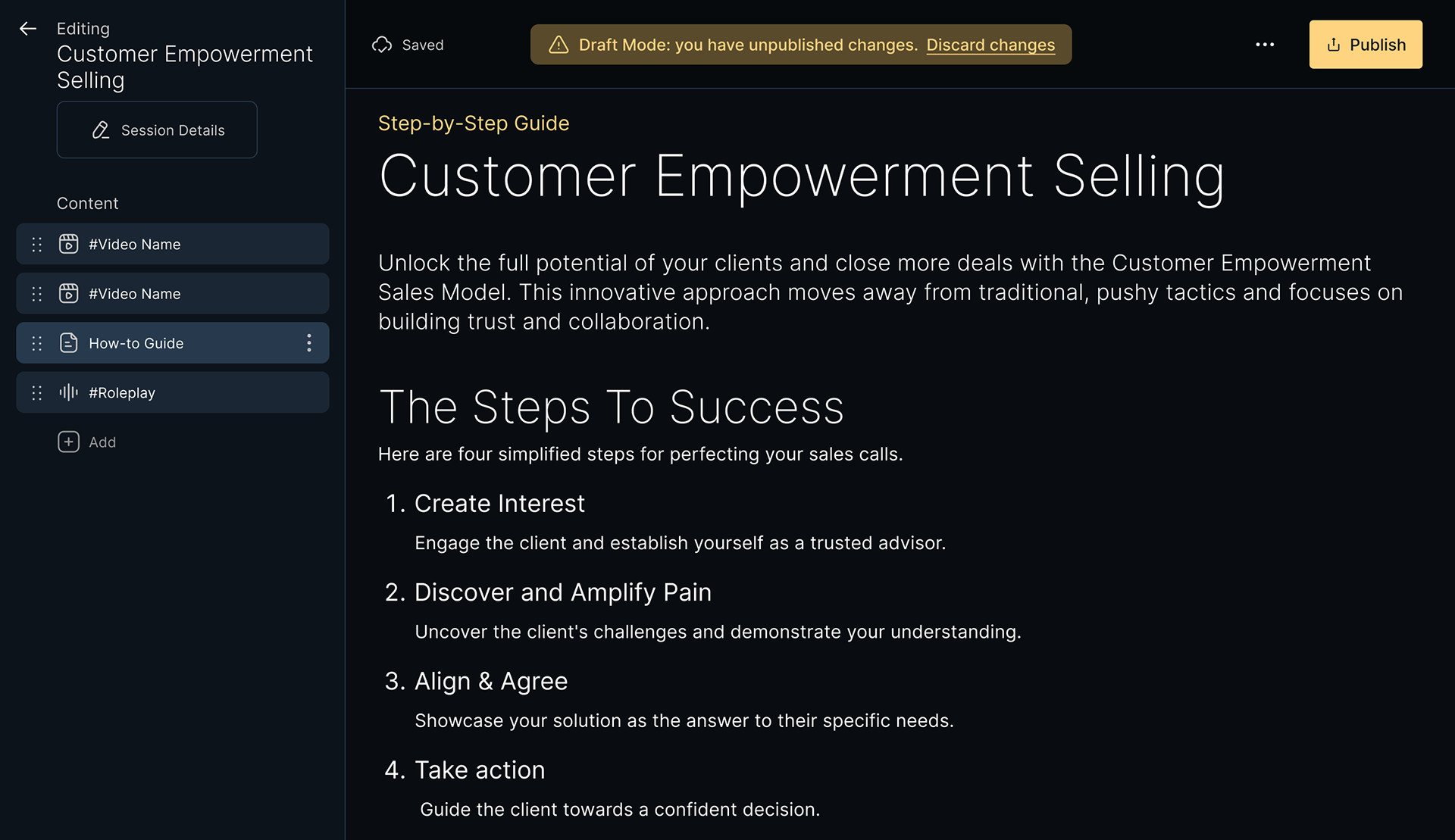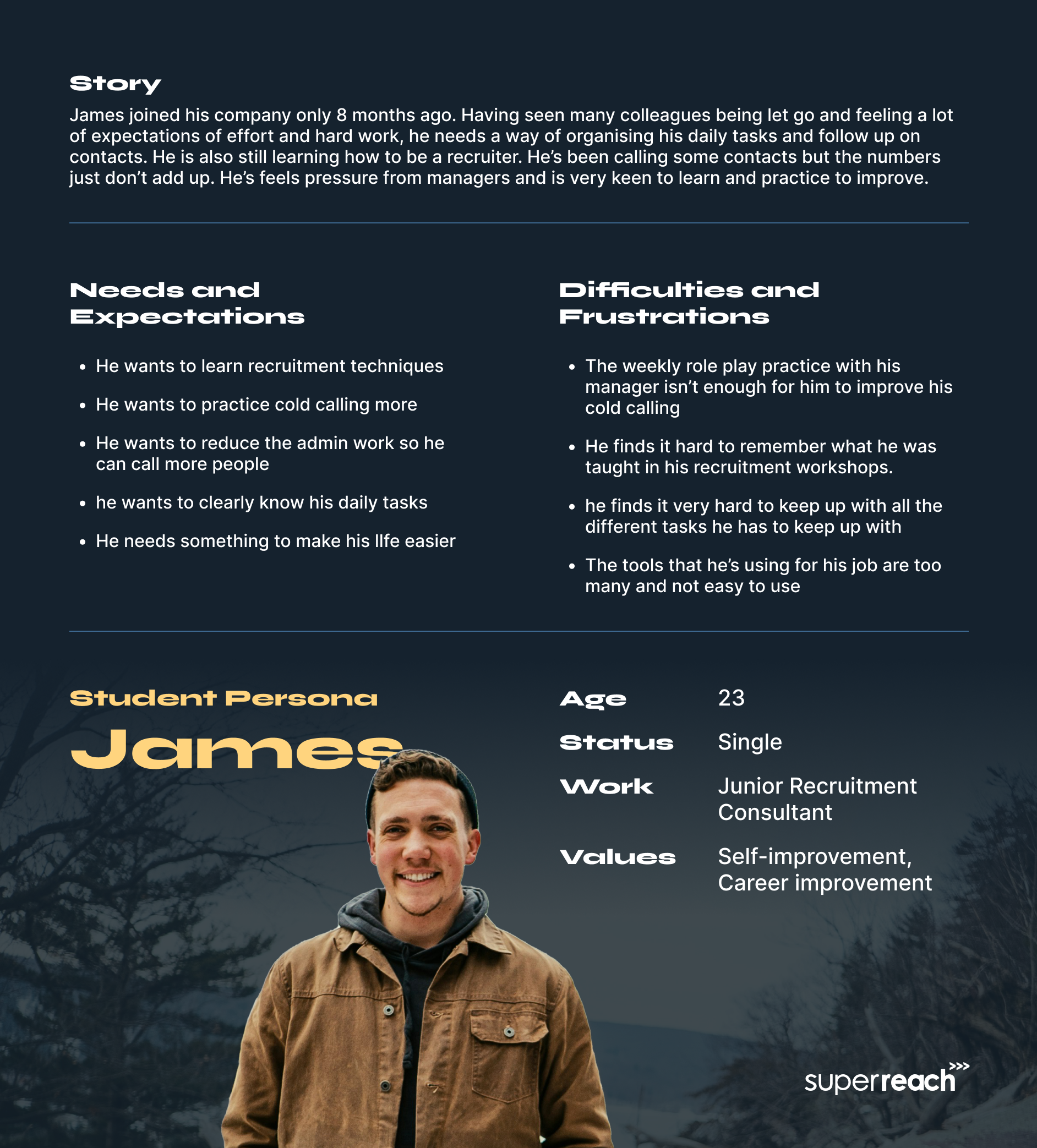2024
Client: SuperReach
SuperReach
A personalised learning and automation platform for sales and recruitment
As the design lead for SuperReach’s Learning Management System (LMS), I focused on creating an engaging, intuitive, and scalable platform that effectively delivered content and facilitated learning. Also, As the design team member of the Outreach Platform, I focused on workspaces, recruitment workflows, automation, and efficiency.
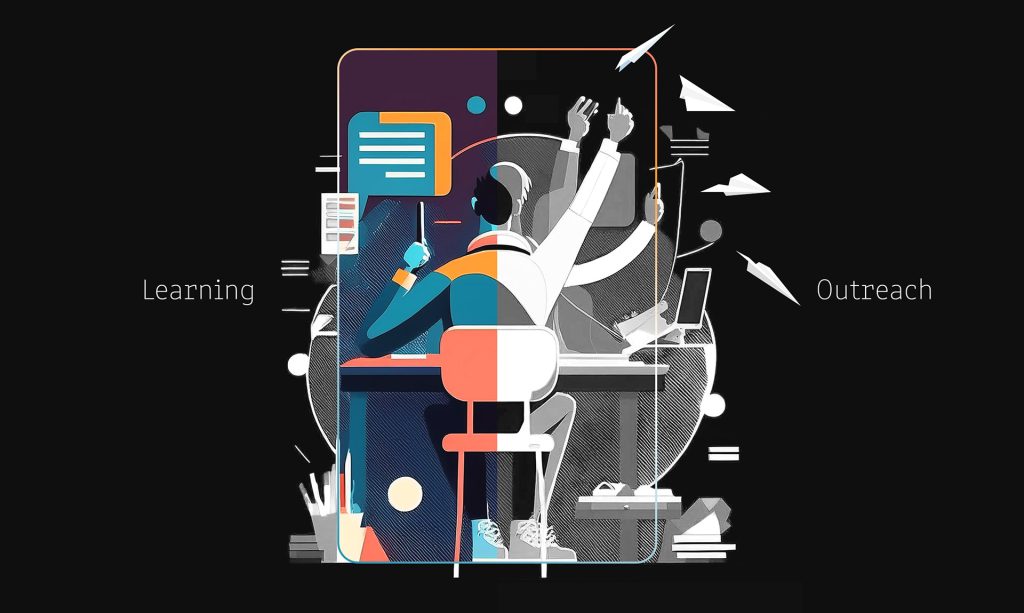
Methodology
Field Study
To understand the users, I volunteered to spend a month at a recruitment company’s office, observing them while working in their natural environment. While there, I asked questions, took images, conducted interviews, and wrote reports. This helped us present our “Student Persona” and their environment in a more accurate light.
Interviews
To help understand the mindset of our “Coach Persona”—usually the decision-makers, we conducted user interviews with CEOs, managers, and team leaders of 7 recruitment companies. Before the interviews, surveys were sent out to help us ask more accurate and relevant questions during the meetings. All the recordings and findings were analysed in Dovetail, and insights were gathered from synthesising those findings.
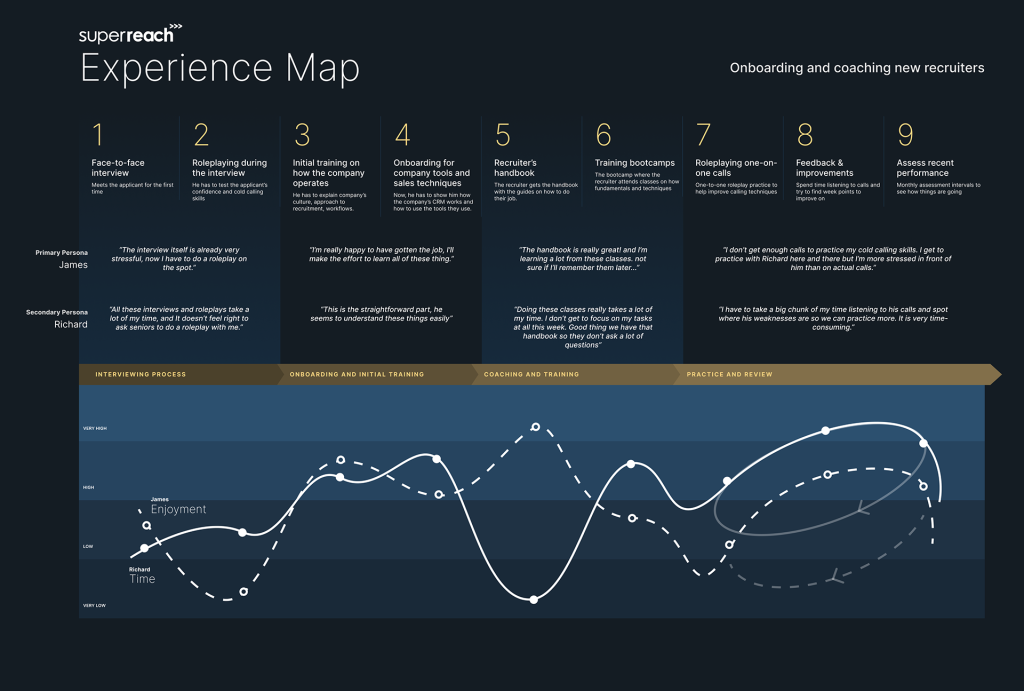
By mapping out this experience for both personas, we identified many pain points and potentials that shaped the product.
Problems & Solutions
Complexity
Organising a large amount of content (videos, text, PDFs, assignments, assessments, etc) in a clear and easy-to-navigate way can be overwhelming. Users tested different designs to help new users understand different hierarchies of learning material (sessions, courses, and programs). The three-level hierarchy should be easy to understand and intuitive to use

Engagement
Keeping users engaged in an online environment can be difficult, especially over extended periods. LMS platforms risk feeling sterile or impersonal. The overall visual design was redesigned to look more pleasing. Progress bars, continue where you left off sections, and recommended courses were implemented to help users quickly return to the learning experience. The thumbnail components underwent several iterations of redesign to find the perfect balance of engaging yet simple, while showing a lot of information.
These design decisions accumulated into design tokens in a scalable and reusable design system that increased design/dev efficiency.
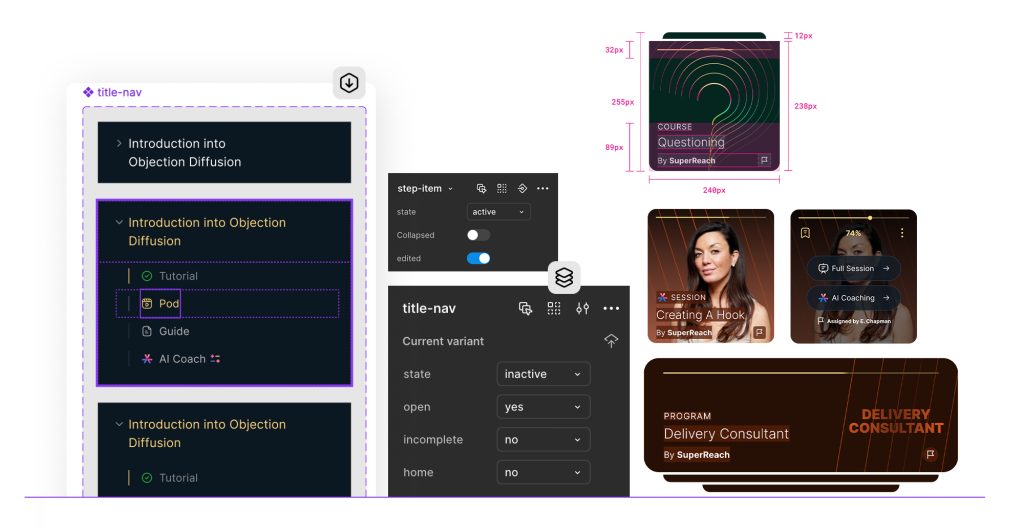
Assessment & Feedback
One of the platform’s features which tested the users’ performance after each learning content was the AI Coaching sessions. After consuming the learning materials, users can practice their newly learned techniques with AI and roleplay their cold calls. The user then can see feedback from the AI on their weaknesses and how to improve the platform’s features, which tested the users’ performance.
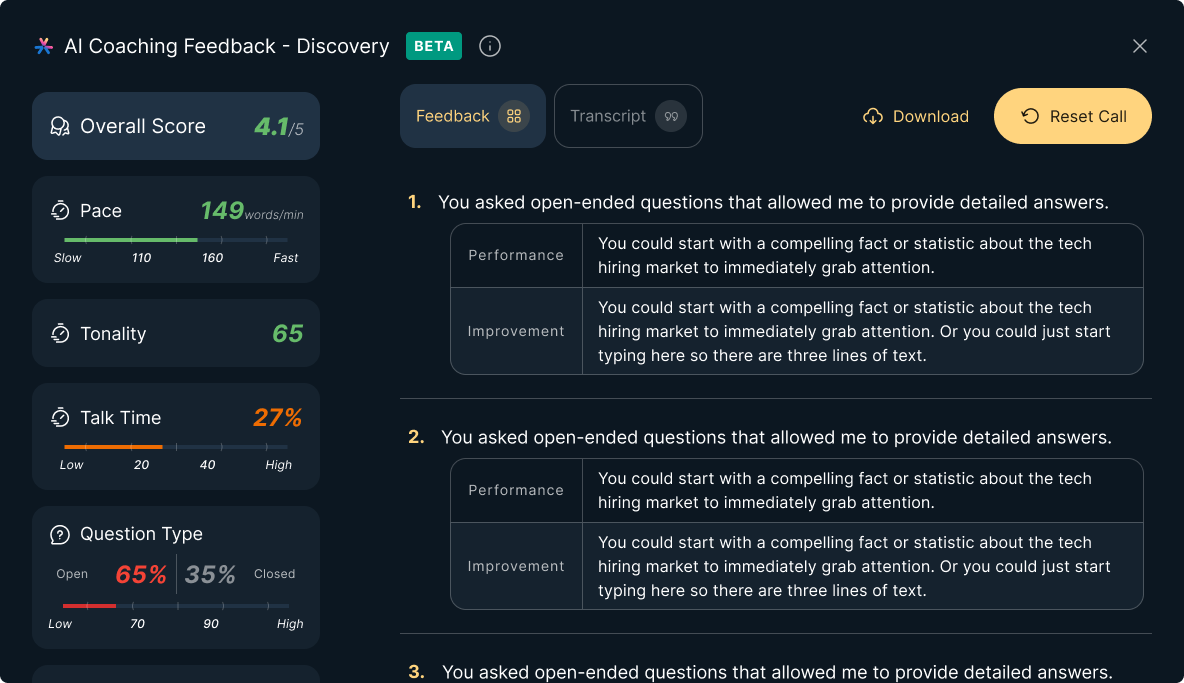
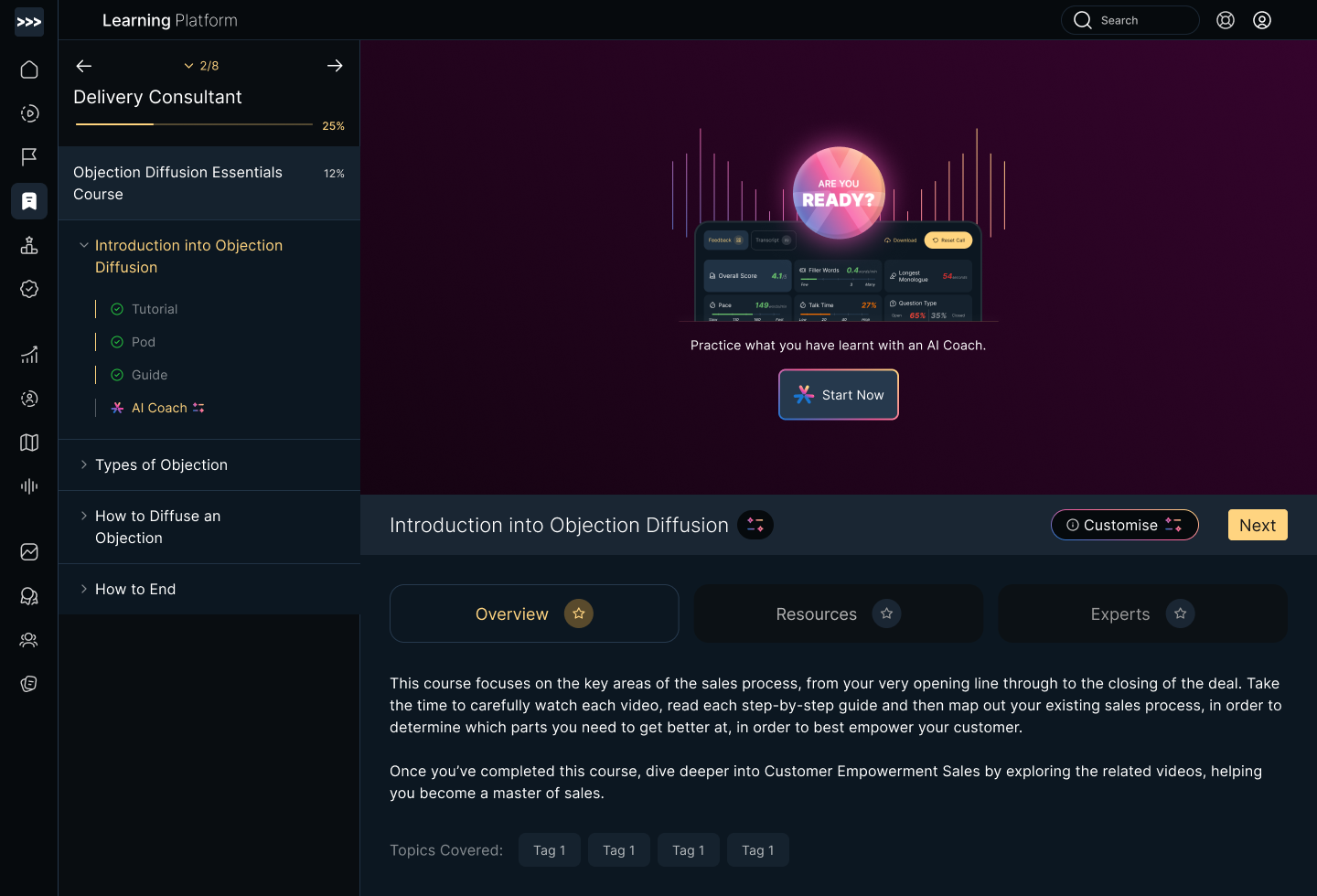
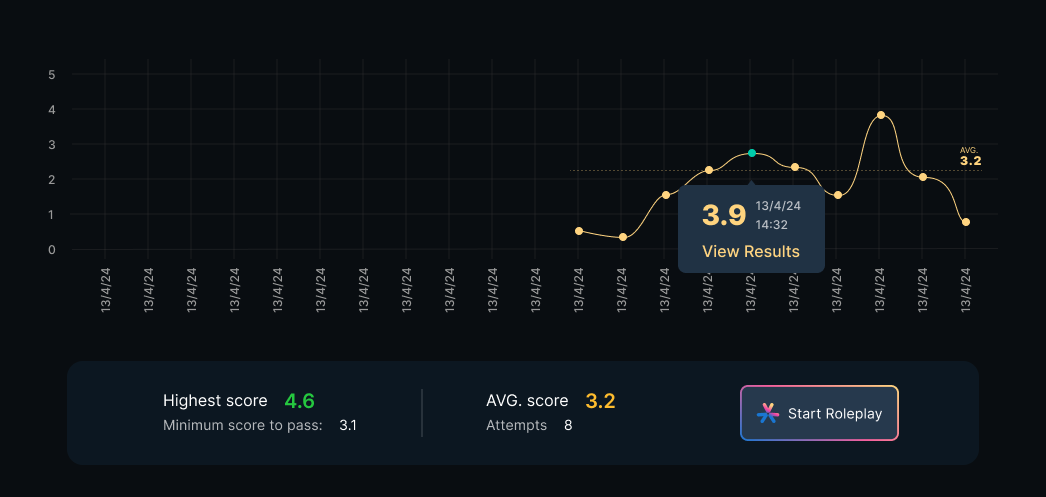
AI Features
AI Roleplay - Call Interface
This was the page where the user interacted with an AI voice-generated bot. The aim was to create a cold-calling experience for users to practice their sales calls. After ensuring the user has access to all the relevant information typical to their natural environment, an animated sound waveform was designed to make the call feel more alive to the user.
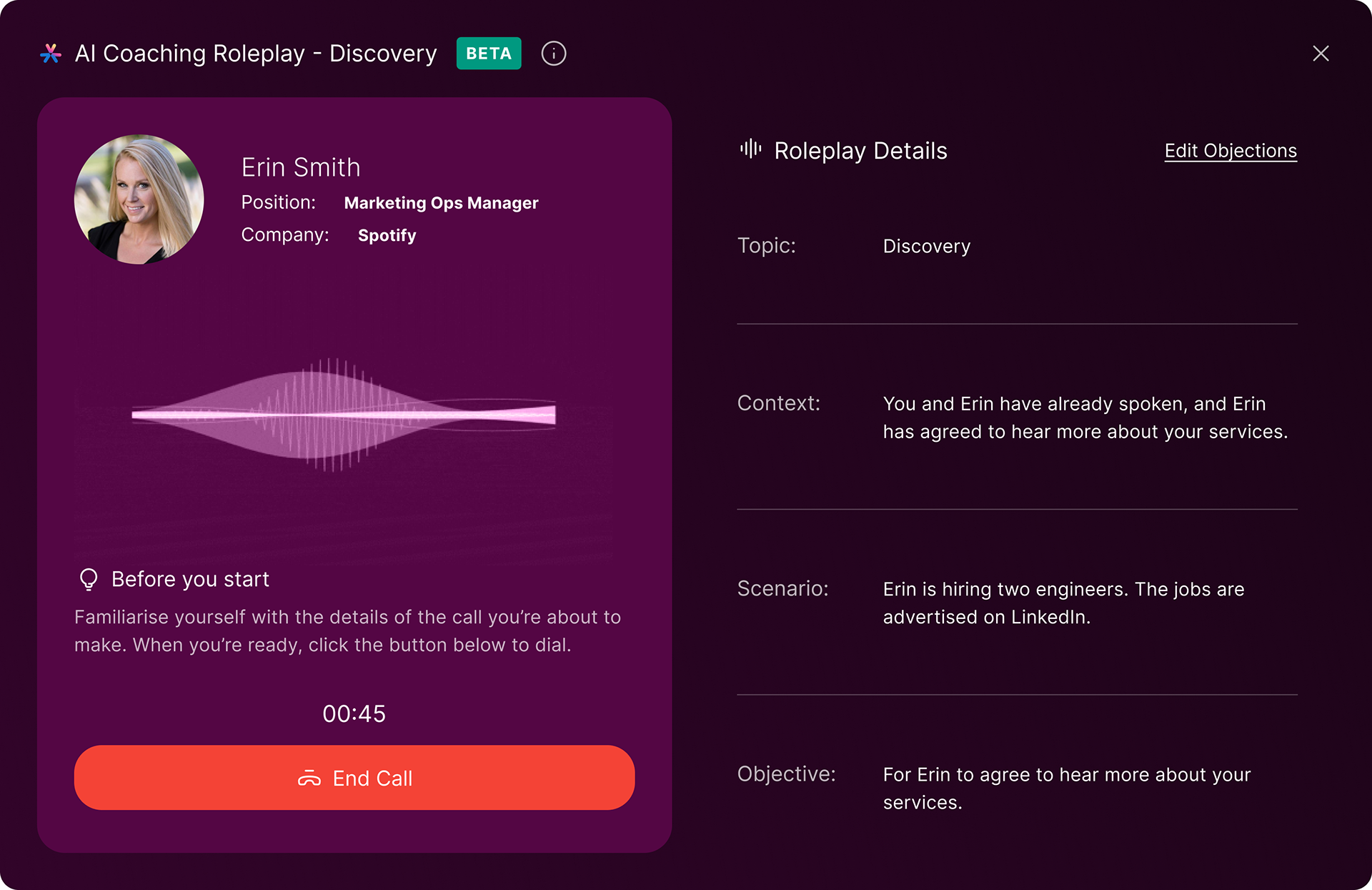
AI Automation
These solutions help users automate and speed up their daily tasks, such as writing emails, creating contact lists, and creating content. This required an AI workspace where all files are managed, and data are viewed, edited, and automated.
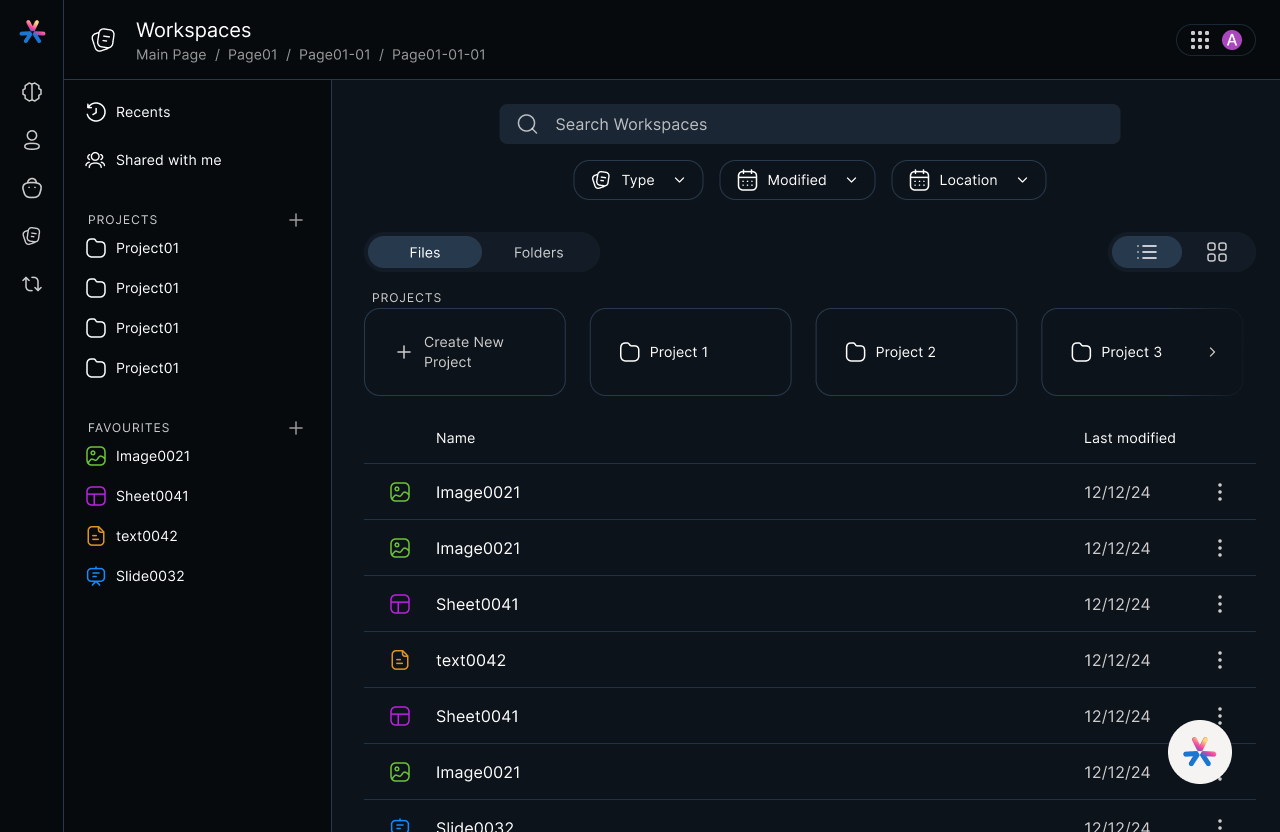
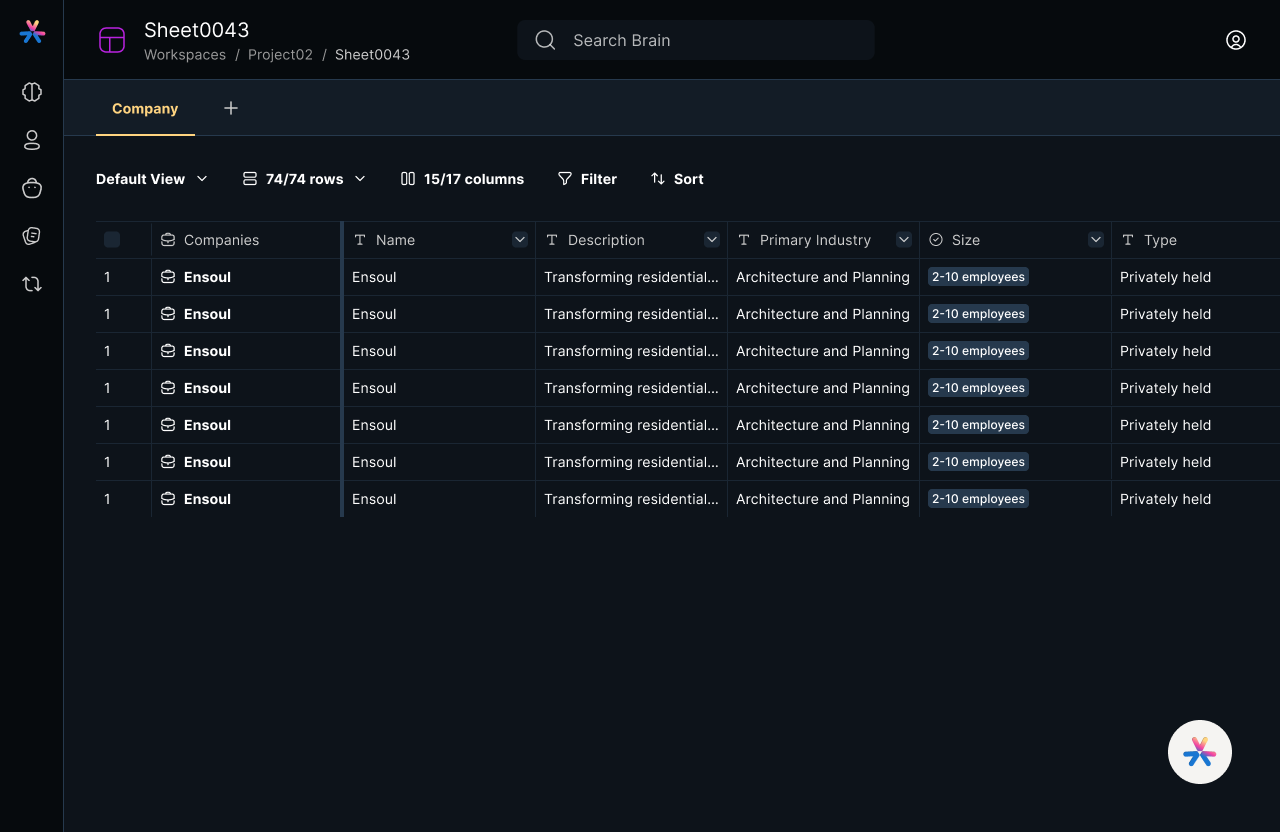
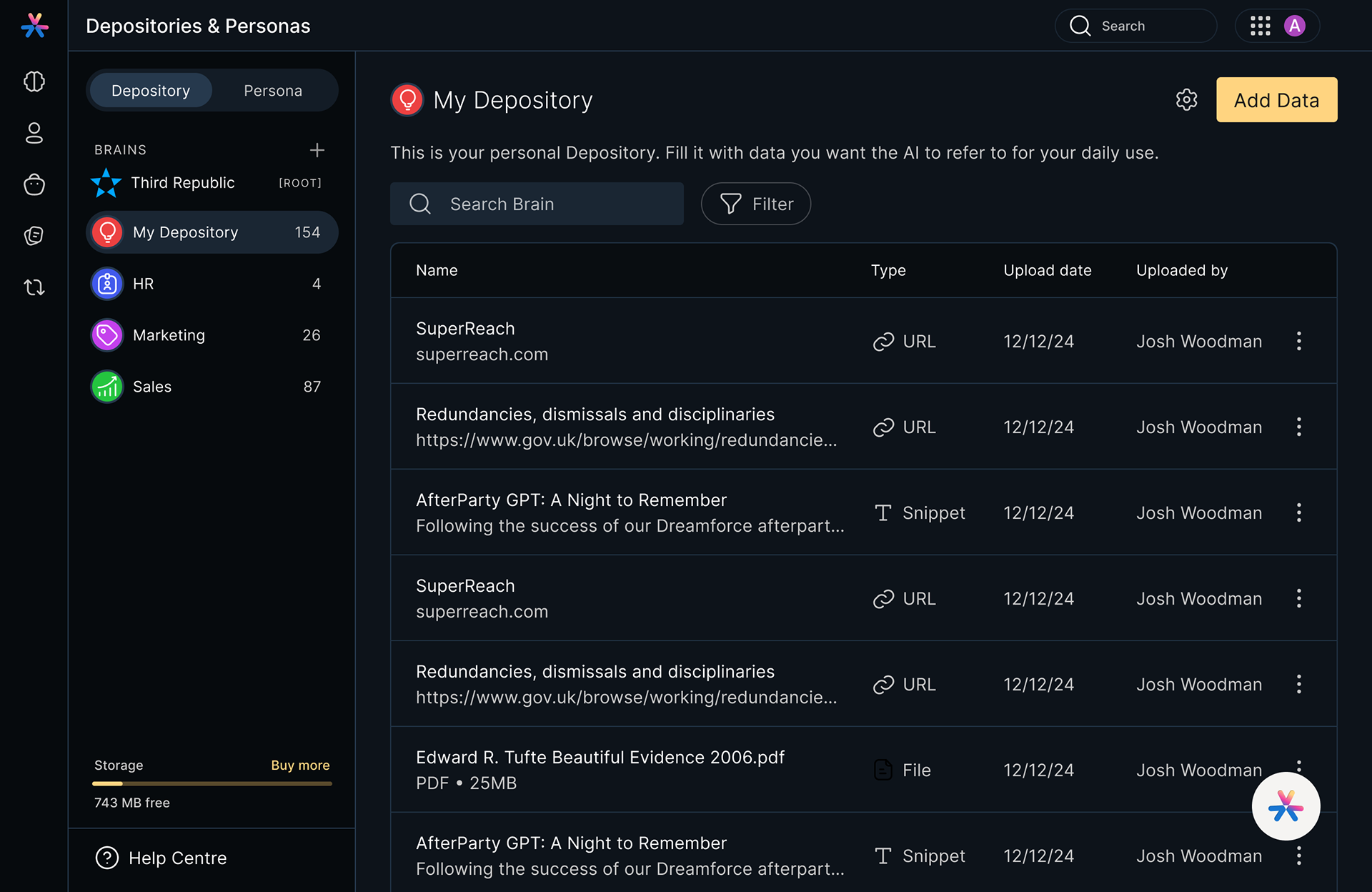
AI Personas - Chat Interface
The AI chat feature in SuperReach allows users to converse with and get help from Custom GPTs trained on different speciality data. The chat dialogue was augmented with new UI elements to help users have an effortless experience when writing their prompts.
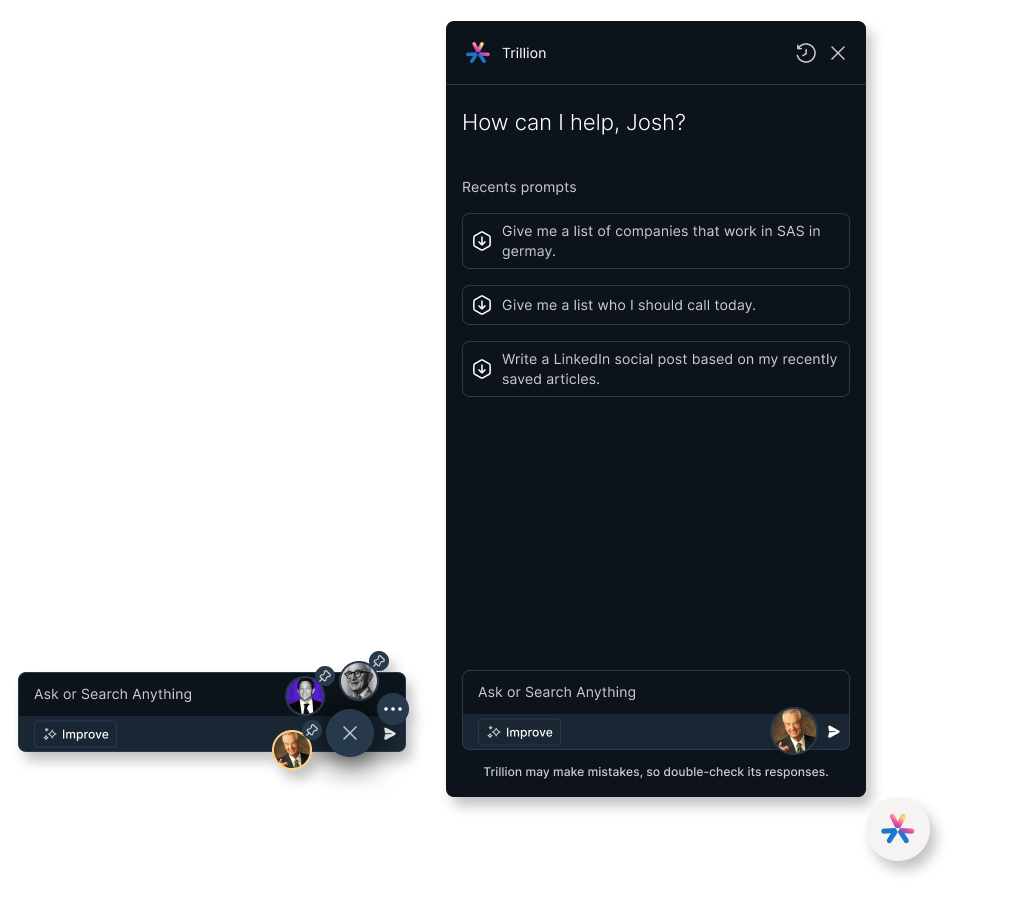
Scalability
One of SuperReach’s goals was to have a scalable product that a broader market could use. Users could personalise the content or even create their own. An example would be the session edit page, which is designed to follow the session page using a WYSIWYG approach.
